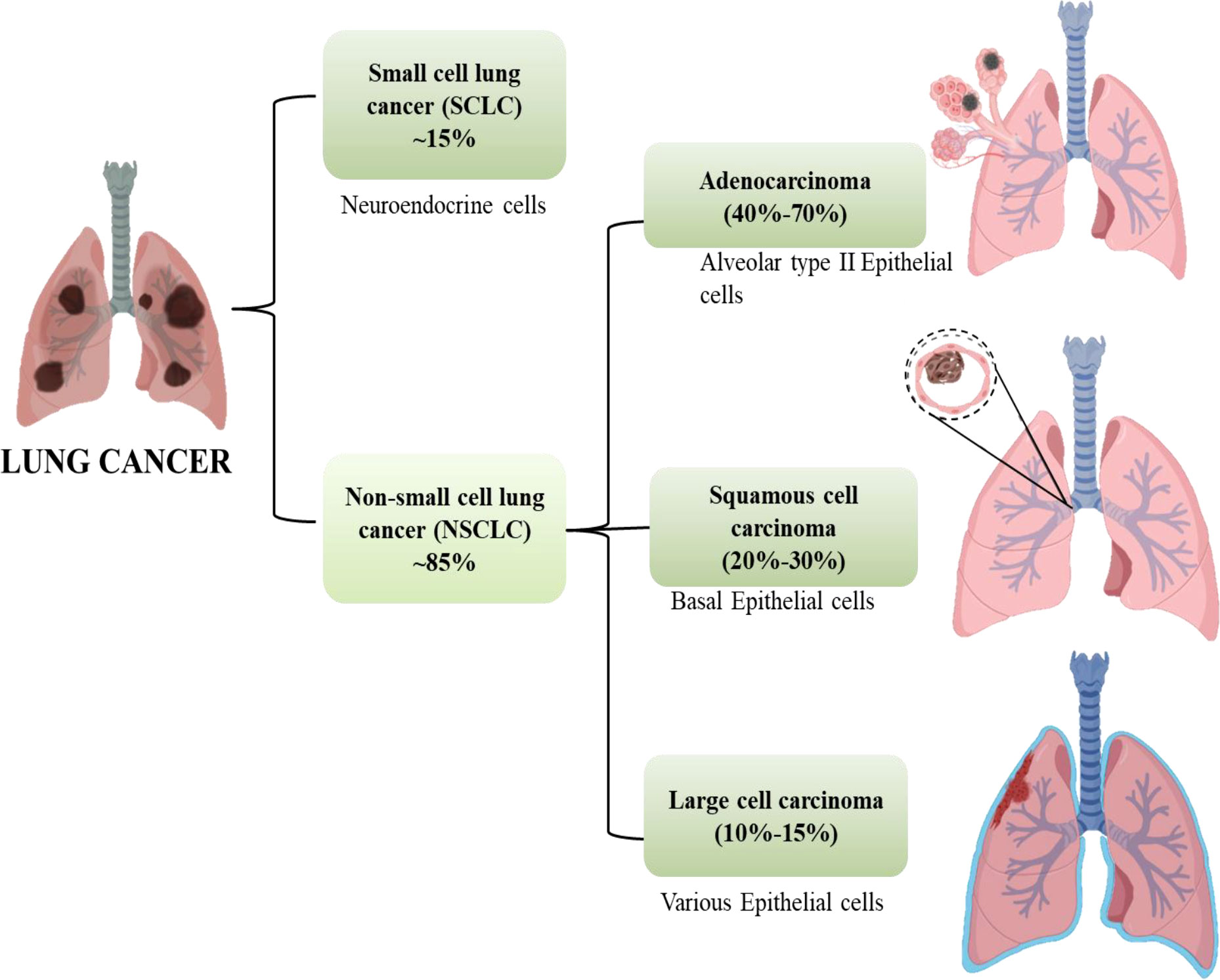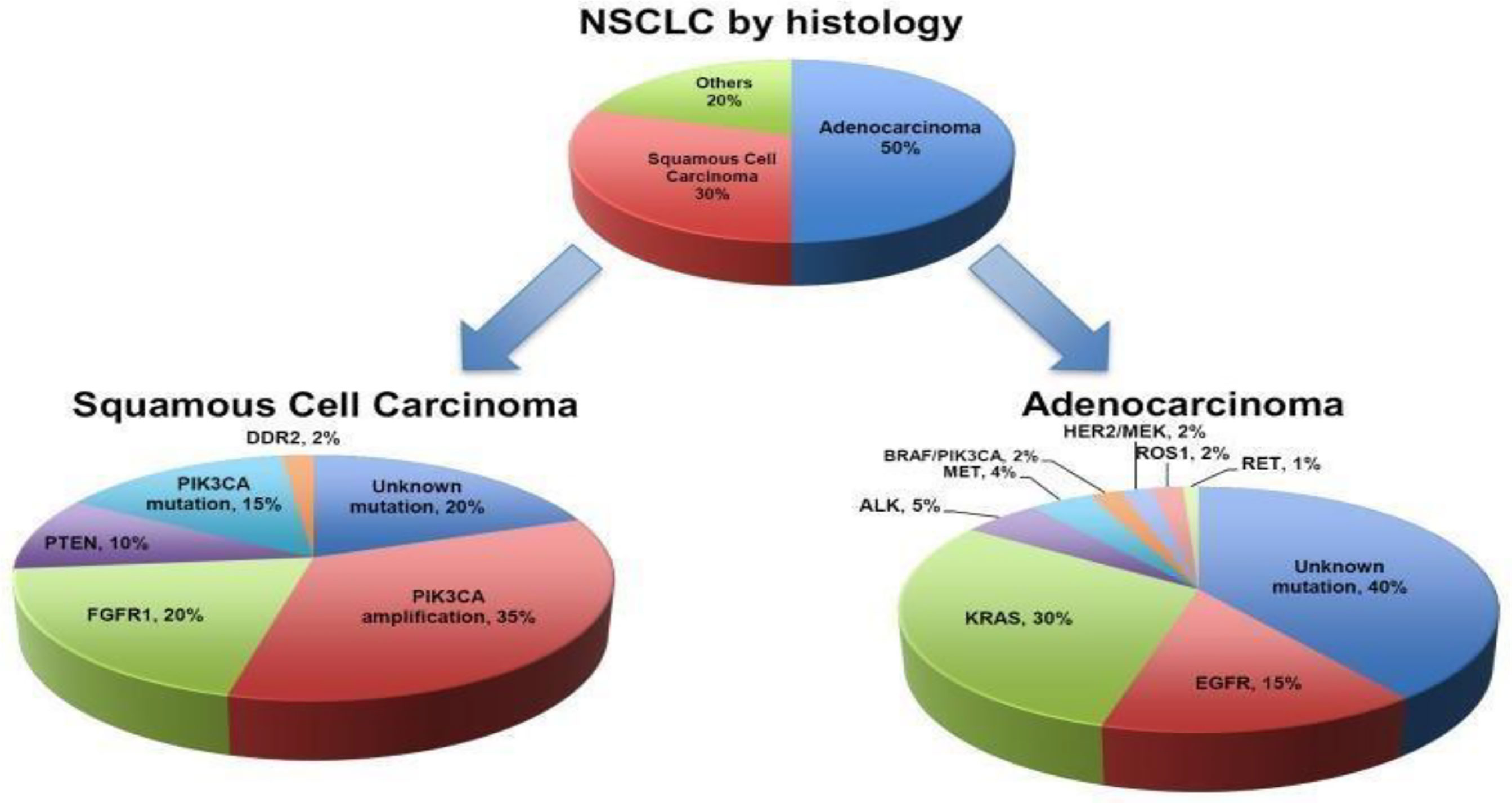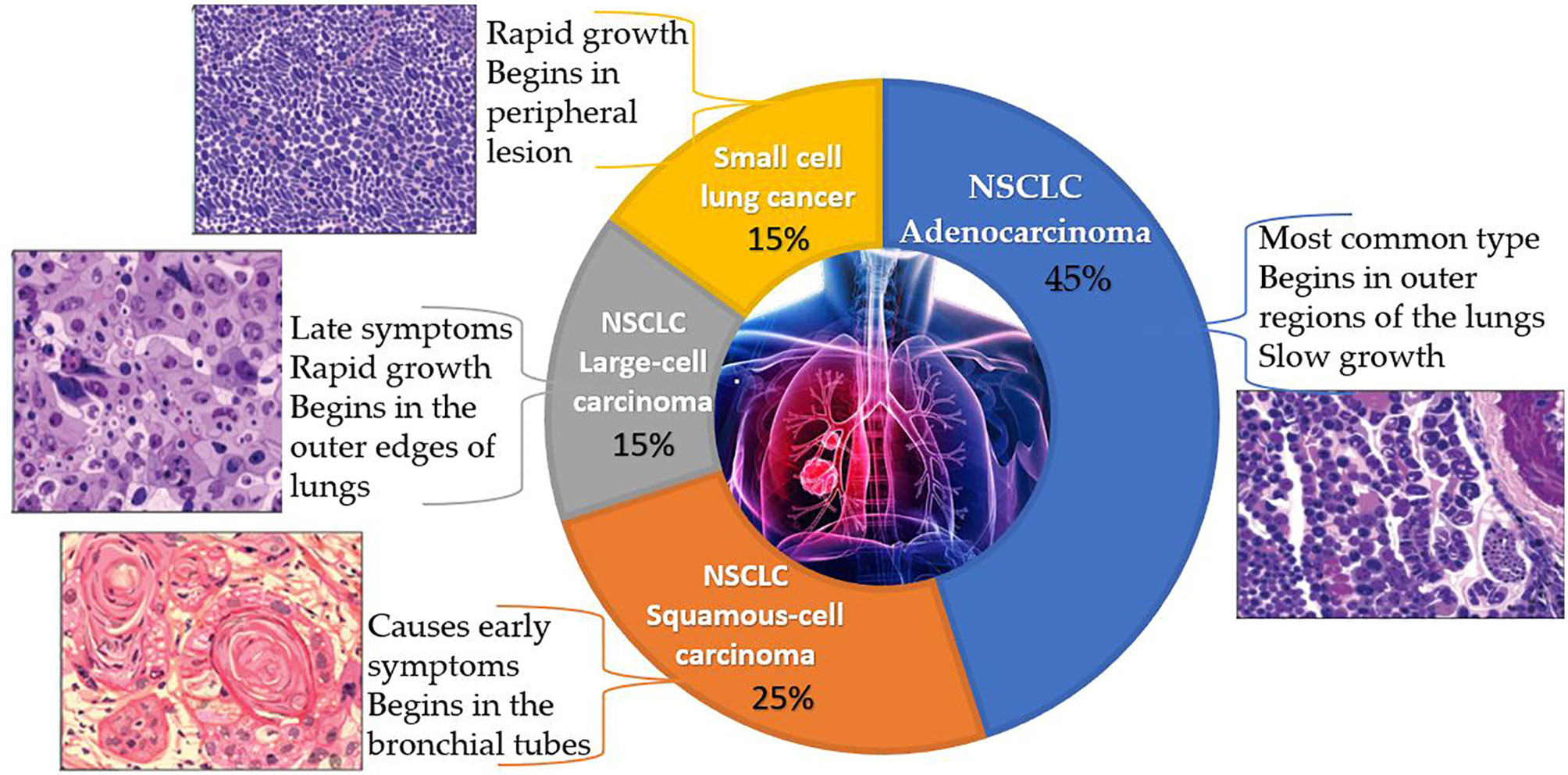Understanding Non-Small Cell Lung Cancer

Non-small cell lung cancer (NSCLC) is the most common type of lung cancer, accounting for about 85% of all lung cancer cases. It is characterized by the abnormal growth of cells in the lungs, which can spread to other parts of the body. NSCLC is a complex and heterogeneous disease, with several subtypes that differ in their biological behavior, response to treatment, and prognosis.
Subtypes of Non-Small Cell Lung Cancer
The subtypes of NSCLC are classified based on the type of cells that are involved in the cancer. The three main subtypes are:
- Squamous cell carcinoma: This subtype is characterized by the presence of squamous cells, which are flat, thin cells that line the inside of the lungs. It is typically found in the central airways of the lungs and is more common in smokers.
- Adenocarcinoma: This subtype is characterized by the presence of glandular cells, which are cells that produce and secrete fluids. It is the most common subtype of NSCLC and is often found in the outer regions of the lungs.
- Large cell carcinoma: This subtype is characterized by the presence of large, undifferentiated cells that do not resemble any specific type of lung cell. It is a less common subtype of NSCLC and is often found in the central airways of the lungs.
Prevalence and Incidence of Non-Small Cell Lung Cancer
NSCLC is a major public health concern worldwide. The global prevalence of NSCLC is estimated to be around 3.9 million cases, and the incidence is estimated to be around 2.1 million new cases annually. The incidence of NSCLC varies significantly across different regions of the world, with higher rates in developed countries and lower rates in developing countries.
Risk Factors for Non-Small Cell Lung Cancer, Non small cell lung cancer
The most significant risk factor for NSCLC is cigarette smoking. Smoking causes damage to the lungs and increases the risk of developing NSCLC by several folds. Other risk factors for NSCLC include:
- Exposure to secondhand smoke: This exposure can also damage the lungs and increase the risk of developing NSCLC.
- Exposure to radon: Radon is a radioactive gas that can be found in homes and workplaces. It can damage the lungs and increase the risk of developing NSCLC.
- Exposure to asbestos: Asbestos is a fibrous mineral that can be found in building materials. It can damage the lungs and increase the risk of developing NSCLC.
- Exposure to air pollution: Air pollution can damage the lungs and increase the risk of developing NSCLC.
- Family history of lung cancer: People with a family history of lung cancer have an increased risk of developing the disease.
- Certain genetic conditions: Some genetic conditions, such as BRCA2 mutations, can increase the risk of developing NSCLC.
Symptoms and Signs of Non-Small Cell Lung Cancer
The symptoms of NSCLC can vary depending on the location and size of the tumor. However, some common symptoms include:
- Cough: A persistent cough that does not go away is a common symptom of NSCLC.
- Shortness of breath: Difficulty breathing, especially with exertion, can be a sign of NSCLC.
- Chest pain: Pain in the chest, especially when breathing or coughing, can be a symptom of NSCLC.
- Wheezing: A whistling sound when breathing can be a sign of NSCLC.
- Hoarseness: A change in voice, such as hoarseness, can be a symptom of NSCLC.
- Weight loss: Unexplained weight loss can be a sign of NSCLC.
- Loss of appetite: A decrease in appetite can be a symptom of NSCLC.
- Fatigue: Feeling tired and weak can be a sign of NSCLC.
- Blood in the sputum: Coughing up blood can be a symptom of NSCLC.
Impact of Non-Small Cell Lung Cancer on Quality of Life and Mortality
NSCLC can have a significant impact on quality of life. The disease can cause physical symptoms, such as pain, shortness of breath, and fatigue, which can make it difficult to perform daily activities. NSCLC can also have a psychological impact, causing anxiety, depression, and fear. The treatment of NSCLC can also have side effects that can affect quality of life.
The mortality rate for NSCLC is high. The five-year survival rate for all stages of NSCLC is about 20%. The survival rate is lower for patients with advanced disease. The mortality rate for NSCLC is higher in smokers than in non-smokers.
Diagnosis and Staging of NSCLC: Non Small Cell Lung Cancer

Diagnosing and staging non-small cell lung cancer (NSCLC) involves a comprehensive approach to determine the extent of the disease and guide treatment decisions. The process typically includes imaging techniques, biopsies, and molecular testing.
Imaging Techniques
Imaging plays a crucial role in detecting and evaluating the size and location of NSCLC. The most common imaging techniques used include:
- Chest X-ray: This is a simple and readily available imaging test that can reveal abnormalities in the lungs, such as masses or infiltrates. However, chest X-rays may not always detect small or early-stage tumors.
- Computed Tomography (CT) Scan: CT scans provide detailed cross-sectional images of the lungs and surrounding structures. They are more sensitive than chest X-rays and can help identify the size, shape, and location of tumors, as well as any spread to nearby lymph nodes.
- Positron Emission Tomography (PET) Scan: PET scans use a radioactive tracer to highlight areas of increased metabolic activity, which can be indicative of cancer. They are often used to detect distant spread of NSCLC, especially to the brain, bones, or liver.
- Magnetic Resonance Imaging (MRI): MRI scans use magnetic fields and radio waves to create detailed images of the lungs and surrounding structures. They are particularly helpful in visualizing tumors near the heart or major blood vessels.
Biopsies
A biopsy is essential to confirm the diagnosis of NSCLC and determine the specific type of cancer cells present. Different biopsy methods may be used depending on the location of the tumor, including:
- Bronchoscopy: A thin, flexible tube with a camera is inserted through the nose or mouth into the airways to visualize the tumor and obtain tissue samples.
- Fine-Needle Aspiration (FNA): A thin needle is inserted into the tumor to aspirate cells for microscopic examination.
- Core Needle Biopsy: A larger needle is used to extract a core of tissue from the tumor for analysis.
- Surgical Biopsy: A small portion of the tumor is removed during surgery for examination.
TNM Staging System
The TNM staging system is a widely accepted system for classifying NSCLC based on the tumor’s size, location, and spread to lymph nodes and distant organs. It helps determine the severity of the disease and guide treatment decisions.
- T (Tumor): This component describes the size and location of the primary tumor.
- N (Nodes): This component indicates whether the cancer has spread to nearby lymph nodes.
- M (Metastasis): This component determines whether the cancer has spread to distant organs.
The TNM staging system uses numbers and letters to describe the extent of the disease, with higher numbers indicating more advanced stages.
Examples of NSCLC Stages
- Stage I NSCLC: The tumor is small and confined to the lung, without any spread to lymph nodes or distant organs. This is the earliest stage of NSCLC, with the best prognosis.
- Stage II NSCLC: The tumor may be larger or has spread to nearby lymph nodes, but not to distant organs. This stage has a good prognosis with appropriate treatment.
- Stage III NSCLC: The tumor has spread to lymph nodes in the chest or has grown into surrounding structures. This stage is considered advanced and may require more aggressive treatment.
- Stage IV NSCLC: The cancer has spread to distant organs, such as the brain, bones, or liver. This is the most advanced stage of NSCLC, with a poorer prognosis.
Molecular Testing
Molecular testing is increasingly used in NSCLC diagnosis and treatment planning. It can identify specific genetic alterations or biomarkers within the tumor cells that may predict response to certain therapies.
- EGFR mutations: These mutations are common in NSCLC and are associated with sensitivity to EGFR tyrosine kinase inhibitors (TKIs).
- ALK rearrangements: These rearrangements are also common in NSCLC and are associated with sensitivity to ALK TKIs.
- PD-L1 expression: This biomarker is associated with response to immunotherapy drugs that target the PD-1/PD-L1 pathway.
Treatment Options for NSCLC

Treatment for non-small cell lung cancer (NSCLC) aims to control the disease, improve symptoms, and extend survival. The best treatment approach depends on several factors, including the stage of the cancer, the patient’s overall health, and the specific characteristics of the tumor.
Surgery
Surgery is the primary treatment option for early-stage NSCLC, particularly for tumors that are localized and have not spread to other parts of the body. The goal of surgery is to remove the tumor and surrounding tissue to prevent the cancer from recurring. Different surgical procedures are available, depending on the location and size of the tumor, including lobectomy, pneumonectomy, and wedge resection.
Chemotherapy
Chemotherapy is a systemic treatment that uses drugs to kill cancer cells. It is often used in combination with other treatments, such as surgery or radiation therapy, to treat advanced NSCLC. Chemotherapy can be administered intravenously, orally, or by injection.
Radiation Therapy
Radiation therapy uses high-energy rays to kill cancer cells. It is often used to shrink tumors before surgery, to treat tumors that cannot be surgically removed, or to relieve symptoms of advanced NSCLC. Radiation therapy can be delivered externally, using a machine to direct the rays at the tumor, or internally, using radioactive seeds or implants.
Targeted Therapies
Targeted therapies are drugs that specifically target cancer cells, interfering with their growth and survival. These therapies are particularly effective for NSCLC that has certain genetic mutations, such as EGFR mutations, ALK rearrangements, and ROS1 rearrangements.
Immunotherapy
Immunotherapy is a type of treatment that helps the body’s immune system fight cancer. It works by boosting the immune system’s ability to recognize and destroy cancer cells. Immunotherapy drugs, such as checkpoint inhibitors, have shown promising results in treating advanced NSCLC.
Combination Therapies
Combination therapies involve using multiple treatment modalities simultaneously. For example, patients with advanced NSCLC may receive a combination of chemotherapy, radiation therapy, and targeted therapies. These combinations can be more effective than single-agent therapies in controlling the disease and improving survival.
Emerging Treatment Strategies and Clinical Trials
Researchers are continually developing new and innovative treatment strategies for NSCLC. Some of the emerging areas of research include:
- Precision medicine: This approach involves tailoring treatment to the specific genetic and molecular characteristics of a patient’s tumor.
- New drug combinations: Researchers are investigating new combinations of drugs, including immunotherapy drugs and targeted therapies, to improve treatment outcomes.
- Immunotherapy with radiation therapy: Combining immunotherapy with radiation therapy may enhance the immune system’s ability to recognize and destroy cancer cells.
- Clinical trials: Clinical trials are ongoing to evaluate the safety and effectiveness of new treatment strategies for NSCLC.
Non small cell lung cancer – Non-small cell lung cancer (NSCLC) is a prevalent and serious form of lung cancer. While research continues to advance, understanding the disease and its complexities is crucial. For instance, exploring the insights of Susan Wojcicki, CEO of YouTube, through her susan wojcicki twitter account, can offer a glimpse into how technology and social media platforms can play a role in raising awareness and disseminating information about NSCLC.
This awareness is vital in encouraging early detection and promoting research to combat this disease.
Non-small cell lung cancer (NSCLC) is a prevalent form of lung cancer, often diagnosed in later stages due to its subtle symptoms. Early detection is crucial for improving outcomes, and raising awareness about the disease is essential. This can be achieved through various means, including promoting healthy lifestyles and educating the public about risk factors.
One notable example of a large-scale event that could be utilized for raising awareness about NSCLC is the FIFA Women’s World Cup, which has demonstrated impressive revenue and attendance figures, as seen in the U.S. and Mexico’s WWC goal 3B revenue attendance records.
By partnering with organizations like the American Lung Association, the FIFA Women’s World Cup could amplify its reach and contribute to the fight against NSCLC.